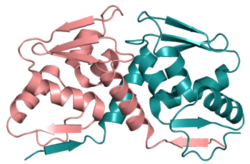| BACH2 | |||||||||||||||||||||||||||||||||||||||||||||||||||
|---|---|---|---|---|---|---|---|---|---|---|---|---|---|---|---|---|---|---|---|---|---|---|---|---|---|---|---|---|---|---|---|---|---|---|---|---|---|---|---|---|---|---|---|---|---|---|---|---|---|---|---|
 | |||||||||||||||||||||||||||||||||||||||||||||||||||
| |||||||||||||||||||||||||||||||||||||||||||||||||||
| Identifiers | |||||||||||||||||||||||||||||||||||||||||||||||||||
| Aliases | BACH2 , BTBD25, BTB domain and CNC homolog 2, IMD60 | ||||||||||||||||||||||||||||||||||||||||||||||||||
| External IDs | OMIM: 605394; MGI: 894679; HomoloGene: 7240; GeneCards: BACH2; OMA:BACH2 - orthologs | ||||||||||||||||||||||||||||||||||||||||||||||||||
| |||||||||||||||||||||||||||||||||||||||||||||||||||
| |||||||||||||||||||||||||||||||||||||||||||||||||||
| |||||||||||||||||||||||||||||||||||||||||||||||||||
| |||||||||||||||||||||||||||||||||||||||||||||||||||
| Wikidata | |||||||||||||||||||||||||||||||||||||||||||||||||||
| |||||||||||||||||||||||||||||||||||||||||||||||||||
Transcription regulator protein BACH2 (broad complex-tramtrack-bric a brac and Cap'n'collar homology 2) is a protein that in humans is encoded by the BACH2 gene. [5] [6] [7] It contains a BTB/POZ domain at its N-terminus which forms a disulphide-linked dimer [8] and a bZip_Maf domain at the C-terminus.




